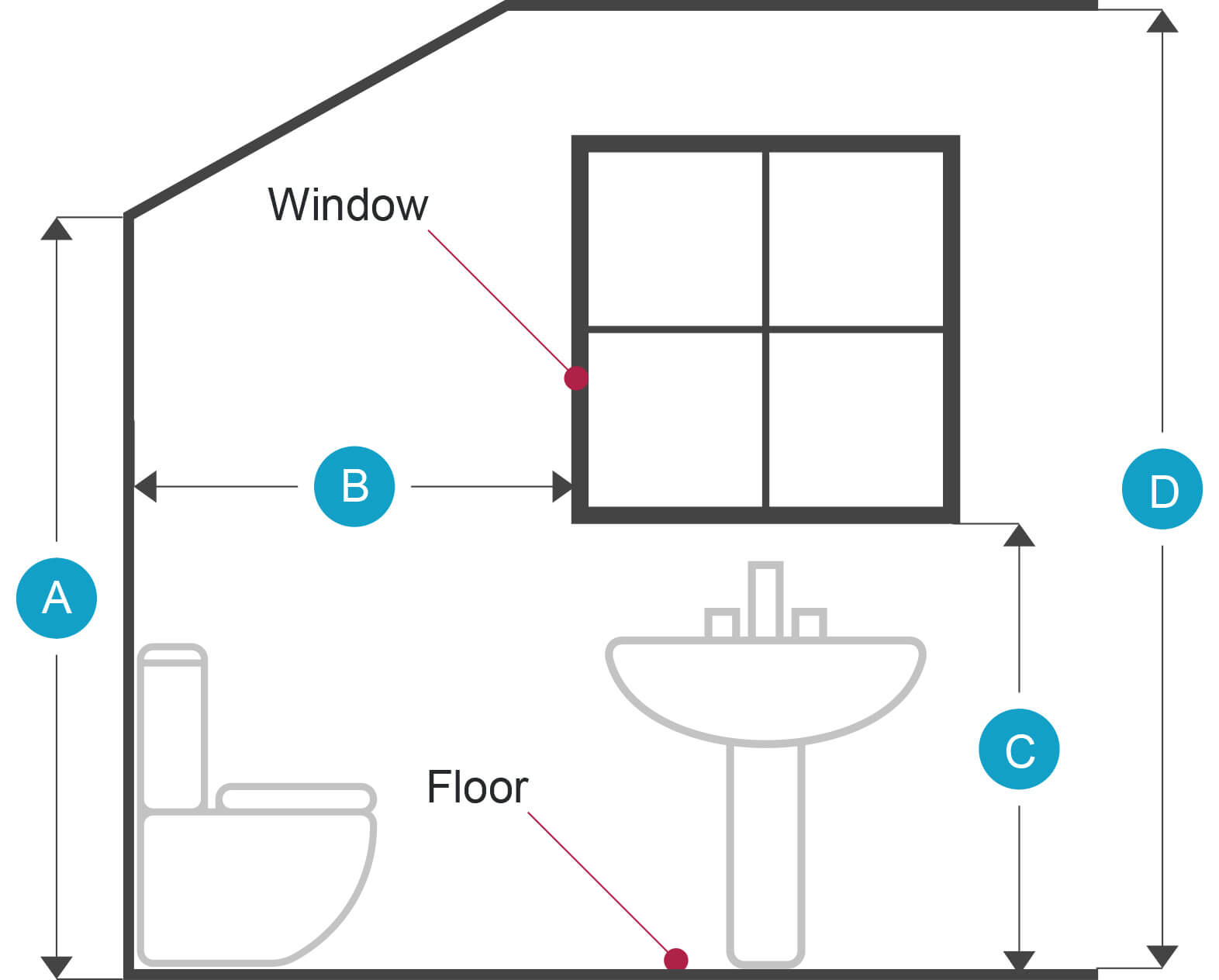Building Codes and Regulations
Adhering to local building codes and regulations regarding bathroom window height is crucial for ensuring safety, ventilation, and compliance with legal requirements. These codes are designed to protect homeowners and occupants from potential hazards and to maintain a minimum standard of living conditions.
Bathroom Window Height Requirements
Local building codes often specify minimum and maximum heights for bathroom windows. These requirements are typically based on factors such as the size of the bathroom, the location of the window, and the type of dwelling. The goal is to ensure adequate natural light and ventilation, particularly in cases of emergency.
- Minimum Height: The minimum height of a bathroom window is usually measured from the finished floor level to the bottom of the window opening. This height ensures that the window is high enough to provide sufficient ventilation and natural light. Common minimum heights vary depending on the location and type of dwelling. For instance, in some jurisdictions, the minimum height may be 30 inches (76 cm) for residential bathrooms, while others may require a higher minimum, such as 36 inches (91 cm).
- Maximum Height: The maximum height of a bathroom window is less common but can be specified in certain building codes. This is usually related to the ease of access for emergency responders or to prevent excessive heat gain.
Variation in Building Codes
Bathroom window height requirements can vary significantly based on location and the type of bathroom.
- Location: Different regions, states, and municipalities often have their own unique building codes. For example, a bathroom window in a coastal area might have stricter requirements related to hurricane resistance than a bathroom window in a more inland region.
- Type of Bathroom: The type of bathroom can also influence window height requirements. For instance, a bathroom in a single-family dwelling may have different requirements compared to a bathroom in a multi-family dwelling or a commercial building.
Consequences of Non-Compliance
Failing to meet bathroom window height requirements can lead to several consequences, including:
- Building Permit Denial: If the proposed bathroom window does not meet local building codes, the building permit application may be denied.
- Fines and Penalties: Building code violations can result in fines and penalties imposed by the local building department.
- Insurance Issues: Insurance companies may refuse to cover damages or losses if the bathroom window does not meet safety standards.
- Safety Concerns: A bathroom window that is too low or too small may compromise ventilation and natural light, posing potential safety risks, especially in emergencies.
Functionality and Safety Considerations: Bathroom Window Height From Floor

A bathroom window plays a crucial role in ensuring proper ventilation, natural light, and safety within the space. Its height directly impacts these aspects, influencing the effectiveness of ventilation, the amount of natural light entering the room, and the ease of escape in case of an emergency.
Ventilation and Natural Light
Proper ventilation and natural light are essential for a healthy and comfortable bathroom environment. Ventilation helps to remove moisture, odors, and pollutants, preventing the growth of mold and mildew. Natural light brightens the space, improves visibility, and enhances the overall ambiance.
A bathroom window positioned at an appropriate height facilitates optimal ventilation and natural light.
- A window placed higher on the wall allows for better air circulation, drawing in fresh air from outside and expelling stale air. This is particularly important in bathrooms with limited space or poor ventilation.
- A window placed lower on the wall can provide more natural light, especially in the morning or evening when the sun is low in the sky. However, it may also expose the bathroom to direct sunlight, potentially causing glare or heat.
Safety in Emergencies
A bathroom window can serve as a vital escape route in case of a fire or other emergency.
A window positioned at a suitable height allows for easy access and egress, especially for individuals with mobility limitations.
- A window placed too high might be inaccessible in an emergency, especially for elderly or disabled individuals.
- A window placed too low may be difficult to open or may not provide sufficient clearance for escape.
Potential Hazards, Bathroom window height from floor
Insufficient or excessive bathroom window height can pose certain hazards.
- A window placed too high might create a potential fall hazard, especially for children or individuals who may lose their balance.
- A window placed too low might compromise privacy and security, allowing outsiders to see into the bathroom.
- A window placed at an awkward height may be difficult to clean or maintain, potentially leading to dirt and grime accumulation.
